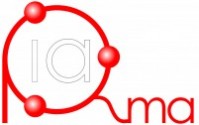Introduction:
Measurement results are integral to making critical decisions in industries, environmental sectors, and food safety control. They provide essential insights for economic, industrial, and health activities. Particularly, environmental radioactivity measurements are pivotal in evaluating the quality and conformity assessment of water, food, and the environment.
The environment naturally contains both naturally occurring radioactive materials (NORM) and artificial radionuclides released through human activities. These “contaminants” can be in the form of alpha, beta, or gamma-emitting radionuclides.
Given the potential health hazards associated with the presence of radioactivity in the environment, countries worldwide have recognized the importance of addressing this issue. Many have adopted the World Health Organization’s guideline activity concentration for water quality.
In this context, IARMA Proficiency Tests, part of our annual worldwide Environmental Radioactivity Proficiency Testing Scheme, serve multiple purposes. They assist in identifying analytical problems, support participating laboratories in maintaining accreditation, and provide a platform for discussions on the analysis of natural and anthropogenic radionuclides.
Proficiency tests hold a vital role within the laboratory accreditation system, serving as a crucial quality assurance measure to ensure accurate and reliable analyses. These tests evaluate a laboratory’s ability to consistently produce dependable results and are instrumental in maintaining high-quality standards. In this post, we will emphasize the significance of proficiency tests within the laboratory accreditation system and explore their various benefits.
Ensuring Accuracy and Reliability:
At the heart of proficiency tests lies the objective of assessing a laboratory’s analytical performance against well-defined standards. By participating in these tests, laboratories can verify the accuracy and reliability of their methods, instruments, and personnel. The comparative nature of proficiency testing allows laboratories to compare their results with those of other competent laboratories, thereby identifying potential discrepancies or biases. This process helps uncover systematic errors, calibration issues, or methodological limitations that may affect the integrity of test results. By addressing these identified weaknesses and making necessary improvements, laboratories can ensure a consistently high level of accuracy in their analyses.
Validation of Competence:
Laboratory accreditation systems are designed to validate a laboratory’s competence and adherence to established standards and guidelines. Proficiency tests serve as an external validation tool that assesses a laboratory’s overall performance. By participating in these tests and achieving satisfactory results, laboratories demonstrate their commitment to quality and their ability to produce reliable results consistently. Such validation enhances the credibility and reputation of a laboratory, reinforcing the confidence of clients, regulatory bodies, and stakeholders in the laboratory’s capabilities.
Continuous Improvement:
Proficiency tests go beyond merely validating a laboratory’s competence; they also foster a culture of continuous learning and enhancement within laboratories. The feedback and comparative analysis provided through proficiency tests offer valuable insights into best practices, emerging trends, and technological advancements in the field. Laboratories can utilize this information to update their methodologies, adopt new techniques, and optimize their processes. Regular participation in proficiency testing enables laboratories to stay updated and adapt to evolving standards, ensuring that they remain at the forefront of their respective disciplines.
Regulatory Compliance:
Many laboratories are subject to regulatory requirements and standards specific to their industry or sector. Proficiency tests act as an objective and independent assessment mechanism, helping laboratories meet these regulatory obligations. Regulatory bodies often recognize participation in proficiency testing as a mandatory requirement for accreditation. By complying with these requirements and consistently performing well in proficiency tests, laboratories demonstrate their commitment to meeting quality standards, ensuring public safety, and adhering to legal and ethical guidelines.
Global Recognition and Collaboration:
Proficiency tests also play a crucial role in facilitating global recognition and collaboration among laboratories. By participating in these tests, laboratories can benchmark their performance against international standards, promoting harmonization and comparability of results. This benchmarking process helps establish a common understanding and a shared language for assessing analytical performance across different laboratories worldwide. Additionally, proficiency testing provides a platform for laboratories to showcase their proficiency on a global scale, fostering trust and facilitating international collaborations. Through these collaborations, knowledge sharing, cross-validation, and the advancement of scientific research and innovation can be promoted.
Conclusion:
Proficiency tests are an essential component of laboratory accreditation systems, strengthening the reliability and accuracy of laboratory results. By participating in these tests, laboratories can validate their competence, identify areas for improvement, and ensure compliance with regulatory standards. The continuous cycle of proficiency testing encourages a culture of learning, innovation, and quality improvement within laboratories. Ultimately, proficiency tests contribute to the overall credibility, trustworthiness, and integrity of laboratory operations, benefiting various industries, healthcare, and research endeavors worldwide.

